Studio Ghibli’s Spirited Away (2001) has aged like fine wine, getting better every time you watch it, with all the charm and magic still present. The timeless plot, the emotional soundtrack, and the incredible art are as magical as the adventure Chihiro Ogino has in the film. And if you’ve seen the movie, chances are that you’ve already noticed that this film is loaded with symbolism. Also, Hayao Miyazaki has not been shy about talking about that on the rare occasions he’s interviewed. But there’s one monster character in the film whose entire presence emanates mystery. We are talking, of course, about the No-Face. So, what is the meaning behind Spirited Away’s No-Face, or Kaonashi as he’s called in Japan?
What Does No-Face Symbolise In Spirited Away?
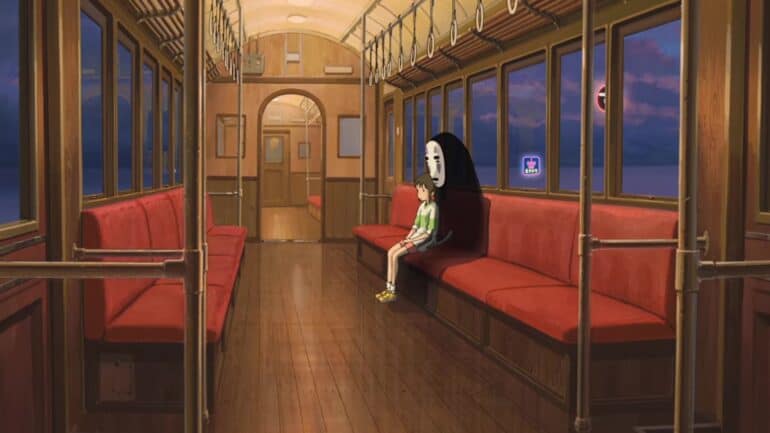
The No-Face is an entity with a dark appearance and a ghostly presence. It leaves footprints even though it has no feet, at least at first sight, as it’s later revealed it does. Aside from his ghostly presence, the most iconic part of the No-Face is its white mask with a blank expression. And even though this mask has a mouth on it, the No-Face has a huge mouth below his body.
The entire image of the No-Face is made to hide its meaning, but it also portrays exactly what it symbolizes. As we all know, Studio Ghubli’s Spirited Away is full of Japanese traditions, mythology, and folklore, and the No-Face is directly part of this. He is what they call a yokai, which are pretty much supernatural entities and spirits. The Kaonashi is a type of yokai known as Noppera-bo, which are faceless entities that usually take a human shape to try and attract people and cause fear or some other mischievous acts.
According to director Miyazaki, the No-Face is partly like the average Japanese person, always trying to imitate, trying to fit in, wanting more, greedy for money, and having a huge sense of dissatisfaction. It is part of the society Hayao Miyazaki grew up in, the XX Century Japan, but one of the great things is that the No-face meaning is always present and valid in our time.
We could say that the No-Face also represents us humans in the world, more specifically, us adults. But there’s also a more positive note on the character’s development. We get to see how it transforms from a creature that’s hungry for attention, greeting for more, and completely following its impulses and desires into a calmer, more mature creature once it receives the attention and love it craves. As we get closer to the end of the story, we see how the character gets to behave and calm himself. It also represents a sign of maturity that comes with the control of emotions and a calmer state of mind.
The No-Face represents humanity’s more impulsive, immature behaviour and the desire to be accepted and have attention. Miyazaki manages to represent all of this and a character arc that’s really deep in a character who barely has anything similar to dialogue, and the message it conveys is as beautiful as the rest of the film.
It is an important part of Chihiro’s journey, as it represents the passing to a more mature way of thinking. It represents getting lost in our impulses, the greed for love and attention at all costs, and the eventual overcoming of such feelings and behaviours.
Let’s discuss things you didn’t know about Spirited Away’s No-Face:
1. No-Face’s Footprints In Spirited Away
Pay close attention, and you’ll notice that No-Face leaves footprints. Of course, this gives rise to the question: Why does No-Face leave footprints when his existence is so hollow and transparent that even the other spirits are not able to detect his presence?
According to some fan interpretations, this is because the footprints prove that the entity was not just a fragment of Chihiro Ogino’s imagination. Whether this is true or not, we imagine the filmmakers didn’t unintentionally add the footsteps to the film.
2. His Real Name
To non-Japanese viewers, the spirit character is simply known as “No-Face.” However, in Japanese, he has a proper name: “Kaonashi.” And the name perfectly fits the character, too. “Kaonashi” means “Faceless”.
Although No-Face has the ability to absorb other people’s faces around him and inherit their personalities and attitudes, the spirit also has no physical body. Kaonashi has a stretched, long, black, transparent (shadow-like) form that seems empty and could be filled up with the thoughts and feelings of the people he absorbs.
3. No-Face’s Gender
From the very beginning of Spirited Away, No-Face is always considered and mentioned as “He”. However, after further analysis (and an unhealthy amount of multiple viewings), it can be concluded that this spirit is actually genderless. This fact becomes acceptable when we consider that the anime character wears a mask that doesn’t have any features that will associate him/her with any gender. In short, No-Face is just a spirit wandering around.
4. Noppera-Bo
Ancient Japanese folklore about yokai and other supernatural beings suggests that there is a faceless ghost that resembles the No-Face character. A Noppera-Bo disguises itself as a human but doesn’t pose a threat to humans. Instead, they enjoy teasing and trolling humans. According to folklore, these spirits approach their victims in disguise, usually as a person they know, and make them comfortable before they terrify them. It would be no surprise if Miyazaki drew inspiration from this when creating No-Face.
5. Inspiration by Babette’s Feast
When Miyazaki was asked about the inspiration behind the massive gluttony of No-Face in Spirited Away, he revealed that he was inspired by the film Babette’s Feast. No-Face is not the only greedy character in the film, either. Many of the anime characters have a hard time controlling their appetites. Even Chihiro’s parents are transformed into pigs due to their gluttony.
6. His Mask Hides Something Horrendous
Look closely, and you’ll notice that No-Face’s mask is actually a piece of aesthetic Japanese art. His mask also contains a mouth that changes its shape with his mood. However, the mouth doesn’t belong to No-Face. It hides his fearsome molars, which he only shows when he is about to devour people. But don’t worry—these molars don’t grind on the swallowed people. In fact, many are able to get out unharmed from his hellish mouth.
7. Bob Bergen Voices No-Face In Spirited Away
While No-Face is not entirely famous for his voice, he does have a few lines in Spirited Away. In the dubbed version of the film, Bob Bergen (famous for his voice acting in popular animated shows, including the Looney Tunes cartoons) is the voice behind No-Face. In the original version of the film, Japanese actor Akio Nakamura voices the character. If you listen carefully, you’ll also notice that whenever No-Face appears on the screen, Balinese Gamelan music is to be heard in the background.
8. Personality Absorption
No-Face has a unique ability that allows him to exhibit the abilities and personality of his prey. This ability is showcased when he swallows Aogaeru (a frog wearing a blue kimono). Kaonashi develops frog-like legs, which he uses for his movement. He could even communicate in the swallowed frog’s voice.
As a lonely spirit wishing to connect with others by eating them and gaining their personalities, he swallows Yubaba’s bathhouse employee and impersonates him to gain the attention of others, mainly the affection of Sen/Chihiro.
9. No Face Fan Theories
Fans naturally deduce backstories and strange theories about their favourite characters. Fans have a few fun theories about the popular Spirited Away character. One theory is that No-Face is actually a human being trapped in the Spirit World with no way out. His transparency, along with Chihiro’s see-through nature when she first enters the Spirit World and the transparency of the passengers on the train, is what people use as evidence to support this particular theory.
Another fan theory is that No-Face is actually symbolic of child slavery in Japan. Strangely, this theory has not been denied by the writer of the film.
10. The Star Wars Connection
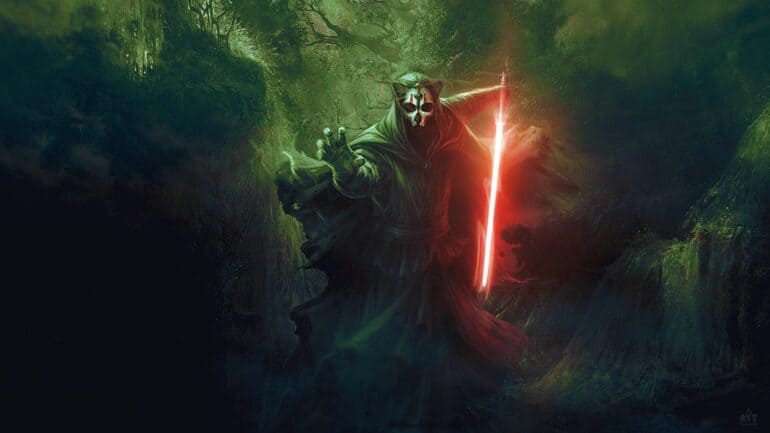
If you are a die-hard Star Wars fan, there is probably a chance that you have played the globally acclaimed game Star Wars: Knights of the Old Republic II: The Sith Lords. If that is the case, then you might be familiar with Darth Nihilus, the Dark Lord. Well, No-Face inspired the character design of the Dark Lord of the Sith. The resemblance is uncanny. The only real difference is that Darth Nihilus’ mask makes him look more frightening and perfectly expresses his hatred.
Tell us your thoughts on Spirited Away‘s No Face. The film is at the top of our list of the best anime movies of all time.



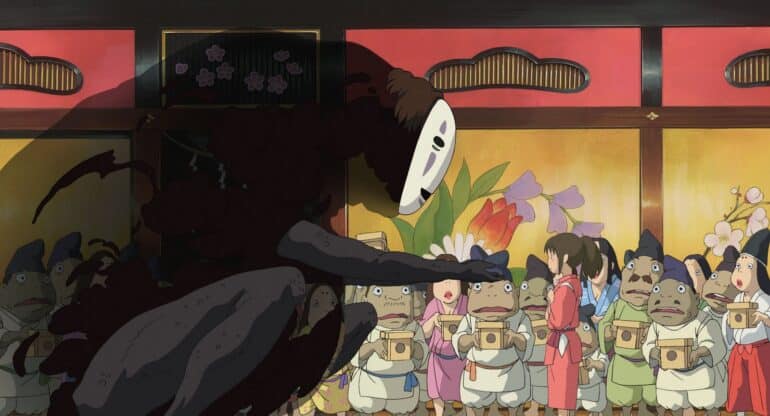
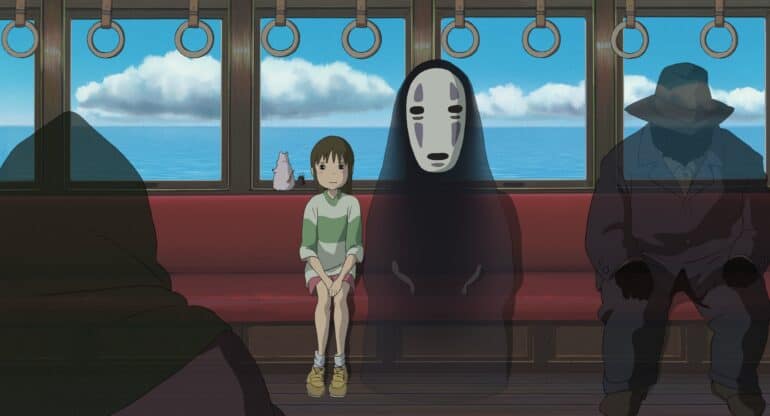
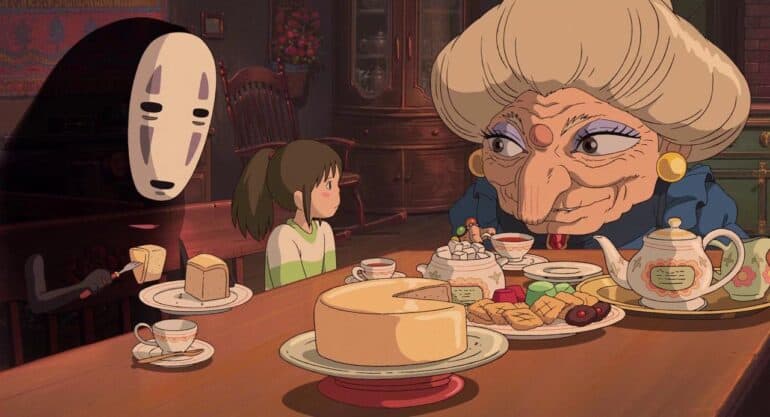
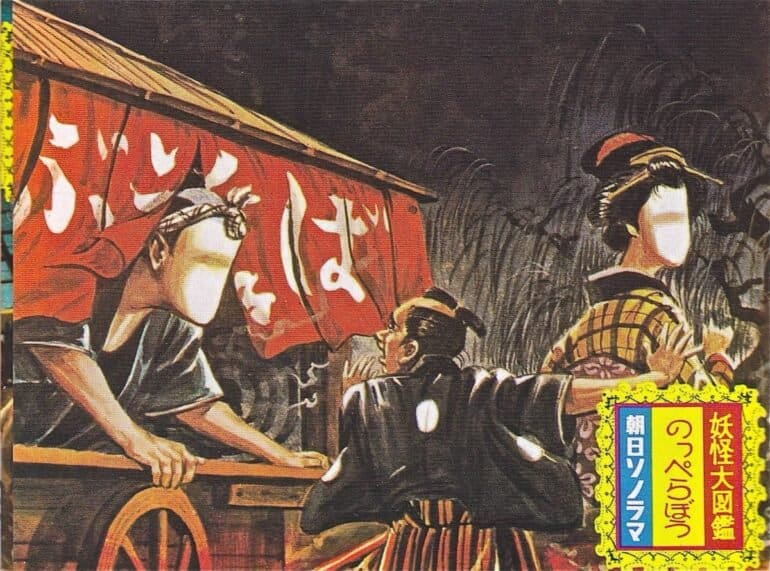
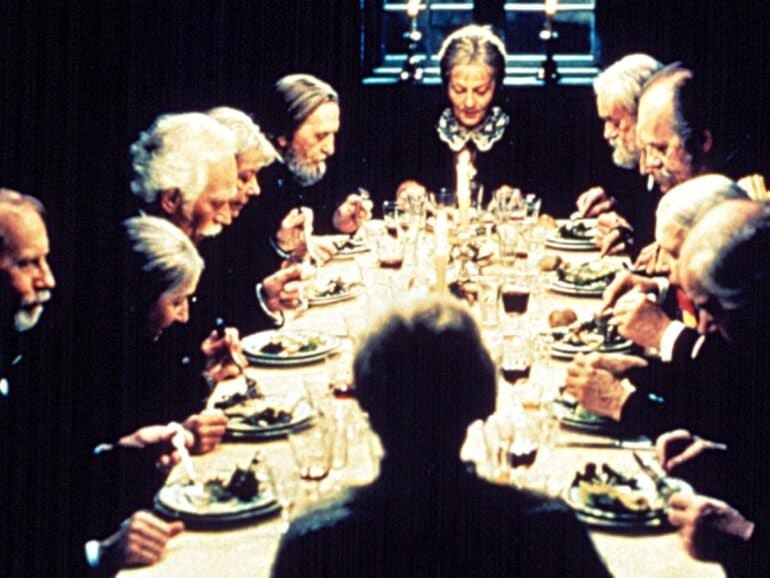
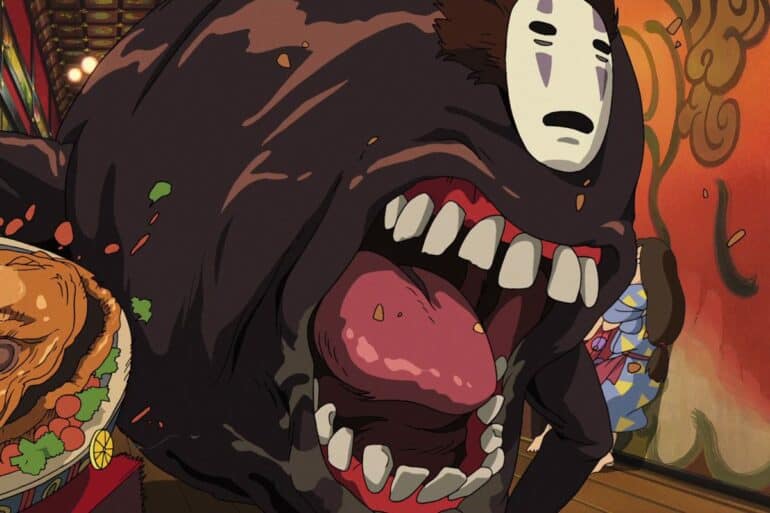
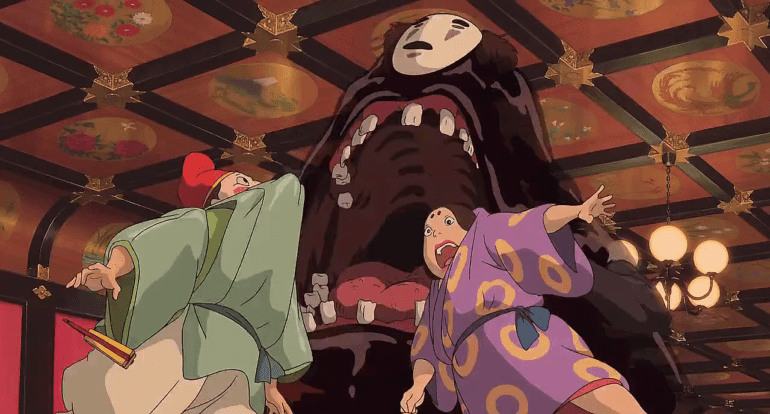
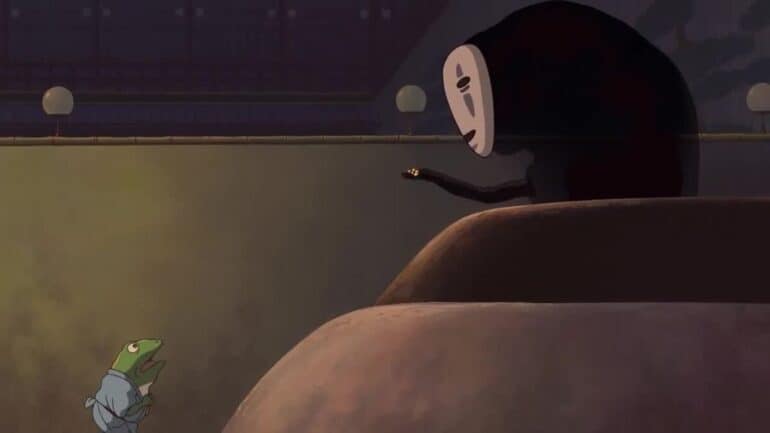
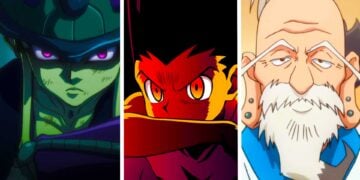

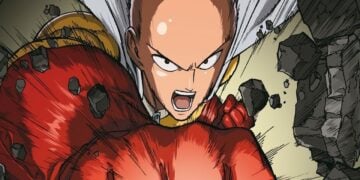
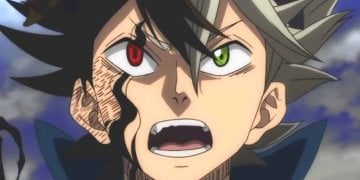
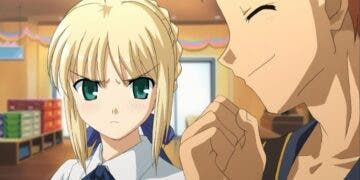
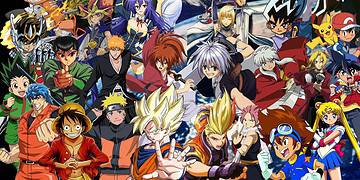
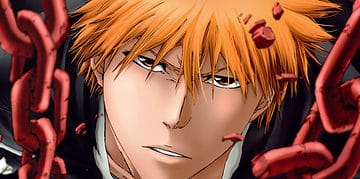
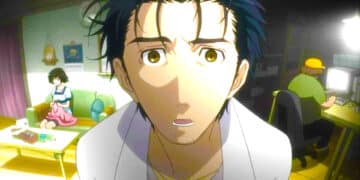
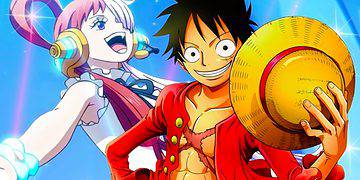
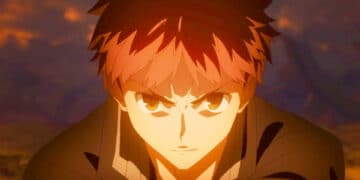
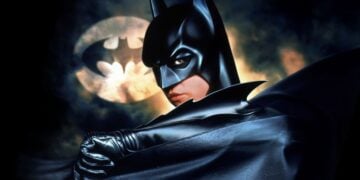
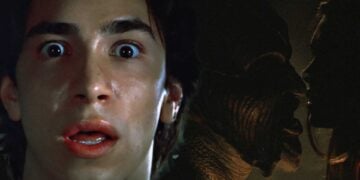
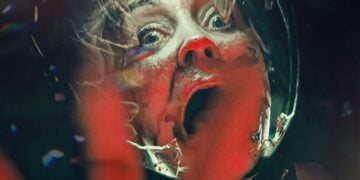
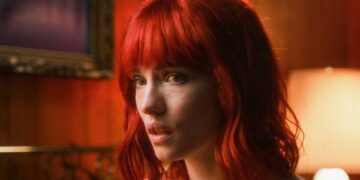
that was pretty cool.
real